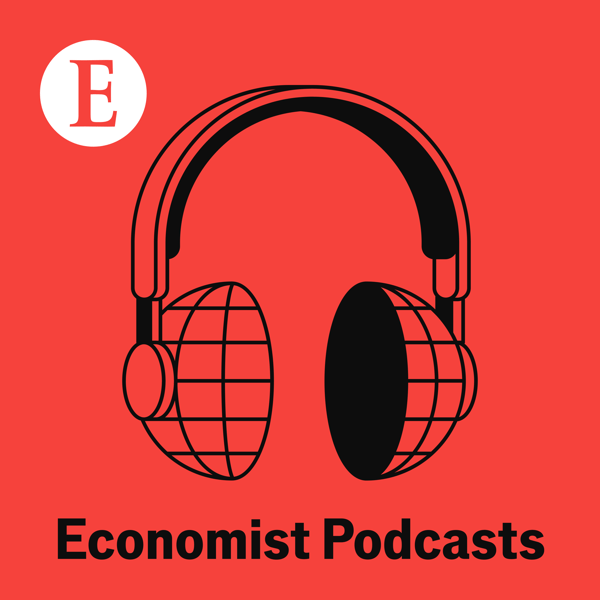The bomb (part 1): were nuclear weapons inevitable?
Economist Podcasts
The Economist
4.4 • 4.9K Ratings
🗓️ 16 July 2025
⏱️ 45 minutes
🧾️ Download transcript
Summary
Where did the world’s most devastating weapon come from? In a four-part series, we go behind the scenes at America's nuclear laboratories to understand how a scientific-mystery story about the ingredients of matter led to a world-changing (and second-world-war-ending) bomb less than five decades later.
Nuclear weapons have been central to geopolitical power ever since. Now America is seeking to modernise its stockpile and, in doing so, its scientists are pushing the frontiers of extreme physics, materials science and computing.
In episode one, we look at the birth of nuclear physics—the science that emerged early in the 20th century to answer a mystery: what is an atom actually made of?
Host: Alok Jha, The Economist’s science and technology editor. Contributors: Frank Close, a physicist and author of “Destroyer of Worlds”, a history of the birth of nuclear physics; Cheryl Rofer, a chemist who used to work at the Los Alamos National Laboratory (LANL); and Nicholas Lewis, a historian at LANL.
This episode features archive from the Atomic Heritage Foundation.
Transcripts of our podcasts are available via economist.com/podcasts.
This is a free episode. To continue listening to “The Bomb”, you’ll need to subscribe.
Listen to what matters most, from global politics and business to science and technology—subscribe to Economist Podcasts+.
For more information about how to access Economist Podcasts+, please visit our FAQs page or watch our video explaining how to link your account.
Hosted on Acast. See acast.com/privacy for more information.
Transcript
Click on a timestamp to play from that location
| 0:00.0 | The Economist. |
| 0:09.8 | On July the 16th, 1945, at 529 in the morning, an audacious experiment took place in the deserts of New Mexico. |
| 0:26.6 | It was the culmination of five decades of theories, arguments and experiments amongst physicists who'd been trying to crack a scientific mystery. |
| 0:31.6 | What lay inside atoms? |
| 0:34.6 | On that summer morning, 80 years ago, it had all led to this. |
| 0:41.3 | First the flash of light, that enormous fireball, the mushroom cloud rising thousands |
| 0:49.3 | of feet in the sky, and then a long time afterwards the sound the rumble thunder in the mountains |
| 1:03.0 | an explosion bigger than anything anyone had ever seen before. |
| 1:14.6 | It was the dawn of the nuclear age. |
| 1:33.0 | Ever since that day, the world has been grappling with the devastating power of nuclear weapons. |
| 1:38.5 | Warfare, international security and geopolitics have never been the same. |
| 1:43.6 | Whatever you think of them, these doomsday weapons are here to stay. For 80 years, they've maintained order |
| 1:46.8 | around the world, albeit in an uneasy, controversial way. And today, as political tensions rise, |
| 1:55.5 | so does their importance. Over the next four weeks in a special series for Babbage, we'll investigate the past, |
| 2:08.1 | present and future of nuclear weapons. We'll speak to the people responsible for building |
| 2:14.2 | America's stockpile of warheads. Find out how those weapons are being modernized, |
| 2:20.2 | how they're being tested without being exploded, and how for the first time in decades, |
| 2:25.9 | new weapons are being developed. What started in the desert with the Manhattan Project in |
| 2:31.4 | 1945 has now turned into a vast technological enterprise, |
| 2:36.0 | with thousands of scientists and engineers |
| 2:39.0 | spread across dozens of sites around America. |
| 2:43.0 | Those facilities include the world's most powerful lasers |
... |
Transcript will be available on the free plan in 9 days. Upgrade to see the full transcript now.
Disclaimer: The podcast and artwork embedded on this page are from The Economist, and are the property of its owner and not affiliated with or endorsed by Tapesearch.
Generated transcripts are the property of The Economist and are distributed freely under the Fair Use doctrine. Transcripts generated by Tapesearch are not guaranteed to be accurate.
Copyright © Tapesearch 2025.

